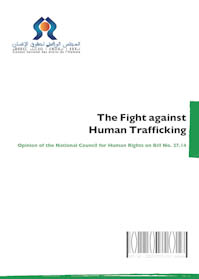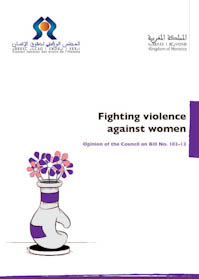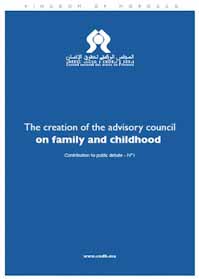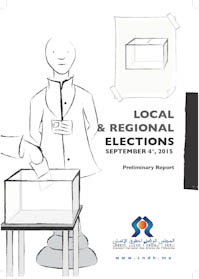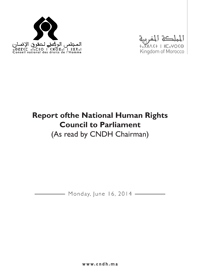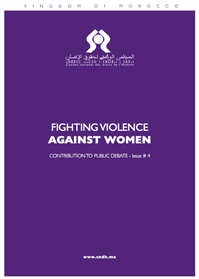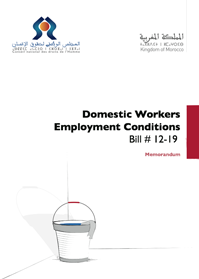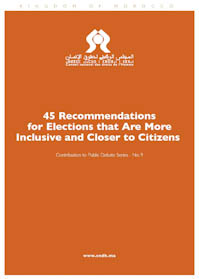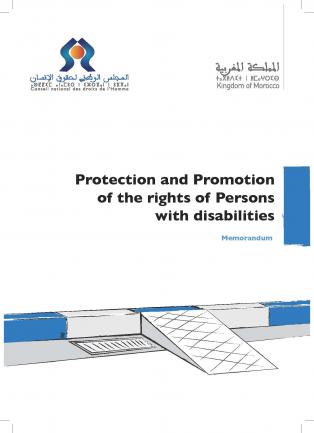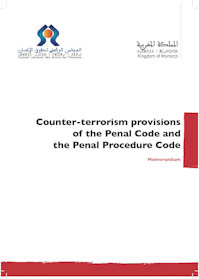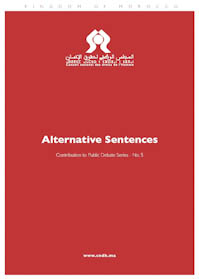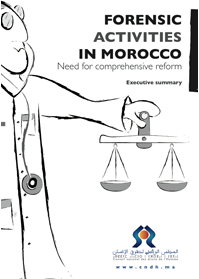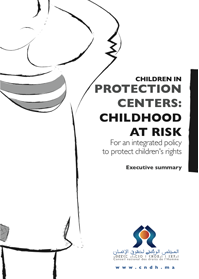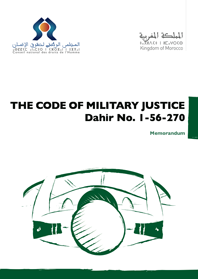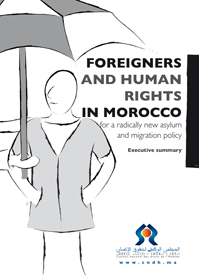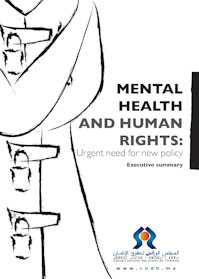Community Reparation: Assessment of the First Year of Launching the Programme
A year after the launch of the Community Reparation Programme, the Steering Committee held its fourth meeting on July 9, 2008 at the CCDH headquarters, in order to validate the progress reports and operational plans. Here is the assessment of a year of convincing results.
The Moroccan approach to community reparation is the first of its kind in all the experiences of transitional justice throughout the world. Based on integrated development programmes and capacity building of local actors, the community reparation introduced the gender approach which is also an original contribution in the field of transitional justice.
The Equity and Reconciliation Commission (IER) deemed that, besides compensations and reparations owed to victims of gross human rights violations, reparation should include a community dimension. It is a dimension of reconciliation which calls for an additional effort of solidarity, measures to promote equality of opportunities and a gradual process of affirmative action in favour of the regions and communities concerned.
The approach to community reparation has been developed throughout the IER mandate, thanks to the mobilization of local actors in different regions where the IER held dozens of meetings and workshops. This work was crowned by the organization of the National Forum on Reparation in September 2005, which was attended by more than 200 Moroccan associations.
Based on the results of this work and proposals made at the Forum, the IER made recommendations on community reparation in such a way as to help rehabilitate the regions and communities and preserve positively the memory. The community reparation is dealt with under its material and symbolic dimension.
A dynamic reconciliation
200 local players: 68 civil society activists, 72 representatives of external services and 24 local elected officials
The first year of the Community Reparation Programme was marked by setting up operational and decision-making structures (steering committee, programme management unit, local coordination bodies) and building capacities of those structures: 8 training and planning workshops were organized for the benefit of local coordination bodies and more than 200 local players participated in various workshops, including 68 civil society activists, 72 representatives of external services and 24 local elected officials, which makes it possible to identify 282 activities on capacity building, service improvement and positive preservation of memory.

In addition to the dynamic launched in collaboration with local players, different governmental stakeholders are engaged in the community reparation dynamics within the scope of partnership programmes developed with the Advisory Council on Human Rights (CCDH), namely the Ministry of Interior, Ministry of Youth and Sports, Ministry of Employment and Vocational Training, Agence de développement de l’Oriental (Development Agency), the CDG Foundation (Financial group), as well as international institutions, such as the European Union (EU) and the United Nations Development Fund for Women (UNIFEM).
A participatory and inclusive approach at the local and central levels
This participatory approach, which includes different types of players at both central and local levels, has been developed throughout the implementation phase of the Programme. It comes to highlight both the symbolic dimension of reparation thanks to strong involvement of the State: government and local elected officials, and establish the foundations for reconciliation through drawing up a "policy" of dialogue and exchange between civil society, elected officials and government. This can only proves the recognition by the State of the injuries caused, which will be made more concrete in the second phase which translates the material dimension of reparation. It is about setting up of development projects, building memorials, rehabilitating and transforming secret detention centres, and so on.
Promoting women’s rights and role in the process of transitional justice in Morocco
In partnership with UNIFEM, the CCDH has developed a strategy for integrating the gender approach into the process of following up the IER recommendations and in particular the question of community reparation. The project, launched in April 2007, is divided into two phases.
The first phase includes capacity building and the establishment of tools to enable players to appropriate the gender approach within the scope of the follow-up of the IER recommendations. This phase which is about to come to an end aims to:
1. Conduct a gender analysis of the IER process and the implementation of its recommendations to assess the current state and propose the indicators for measuring the integration of gender and women’s rights in the follow-up of the IER recommendations;
2. Build capacities of local actors and CCDH staff in the field of gender and women’s rights;
3. Strengthen dialogue at the local level and at the CCDH level as regards gender and follow-up of the IER recommendations;
4. Publish life-stories of women victims of gross human rights violations during the period 1956-1999;
5. Launch three pilot projects in three regions identified by the IER: Zagora / Errachidia (Imilchil) and Figuig;
The second phase which is a consolidation phase addresses:
1. Communication and awareness-raising around violence against women;
2. Sharing Moroccan experience in gender and transitional justice, and strengthening exchange and dialogue between various stakeholders locally and nationally;
3. Modelling the Moroccan experience to publicize the plight of and violence against women directly or indirectly, and harm done to them following the human rights violations in Morocco in 1956-1999;
Regional action plans for capacity-building, preservation of memory and development
The various meetings and workshops held in the regions identified by the IER resulted mainly in 5 areas of activity that will be the subject of projects to be implemented by local NGOs, namely:
- Capacity-building of local players: to encourage the upgrading of local players and strengthen active citizenship among target populations. Four themes were identified: human rights education, communication techniques, intervention approaches and promotion of governance;
- Preservation of memory : rehabilitation of landmarks of memory and writing the history of these communities and regions; several measures were proposed: the creation of spaces for preserving the memory, producing films and documentaries, creation of memorials…;
- Development of additional sources of income in order to improve the living conditions of the population concerned;
- Protection and preservation of the environment with the aim to raise awareness of local players as regards the environmental issue;
- Upgrading educational and social services, and basic infrastructure.
To achieve these actions, a call for proposals has been launched for local associations in target provinces, regarding a total sum of 14 million dirhams for 2008. The programme receives funding from the European Union and the Oriental agency. The CDG ensures its implementation.
Also, in addition to the three conventions signed with different ministerial departments: Ministry of Interior, Ministry of Youth and Sports, Ministry of Employment and Vocational Training, the CCDH is in contact with other departments to mobilize additional funds.
One of the biggest contributions of the Moroccan experience in the field of transitional justice is that it could find a balance between the legal approach based on the rights of victims and social approach allowing for a far-ranging look at the future as regards reconciliation, reforms and democracy-building. This has led to the emergence of a social catharsis which, in addition to public debate, has promoted the mobilization of local players, namely civil society and authorities in a dynamic combining reparation, reconciliation and development.
The challenge today is to strengthen this dynamic and give it a national dimension, in terms of the players involved and in terms of the topics addressed relating to institutional reforms to ensure non-repetition of the violations, and to policies to be put in place for the consolidation of the gains accumulated in democracy and human rights.
--------------------------------------------------------------------------------------
Gender Dimension in the IER Work

The Equity and Reconciliation Commission (IER) integrated the gender dimension in its activities in order to outline the specificity of violations against women and their impacts as well as the way through which women faced this political violence. This approach is based on the following headings:
- Holding closed individual or group hearings for a large number of women, direct or indirect victims;
- Exploiting data to highlight the categories of violations, their impacts and the demographic characteristics of victims;
- Studying the requests submitted by women and men to highlight the specificity of violations with regard to each sex;
- Conducting a qualitative study about “gender and political violence”, covering seven regions and women from different age, cultural and social groupings, who had lived through different experiences. The study depended upon ‘the life-story interview’, using interviews and ‘focus groups’.
- Organizing meetings with women’s associations, to involve them in formulating summaries of the experience and suffering of women, and formulating draft recommendations;
- Using the gender workshop organized in the framework of the National Reparation Forum to receive opinions and recommendations of local human rights civil society activists.
See IER Report, Volume I
----------------------------------------------------------------------------------
Regional Coordination Bodies for Community Reparation Programme:

- Figuig : Set up in October 2007
- Errachidia : Set up in October 2007
- Zagora : Set up in October 2007
- Ouarzazate : Set up in November 2007
- Al Houceima : Set up in January 2007
- Nador : Set up in January 2007
- Hay Mohamadi : Set up in January 2008
- Khenifra : Set up in January 2008
- Azilal : Set up in April 2008
- Tantan : Set up in March 2008
- Khemissat : Set up in March 2008





